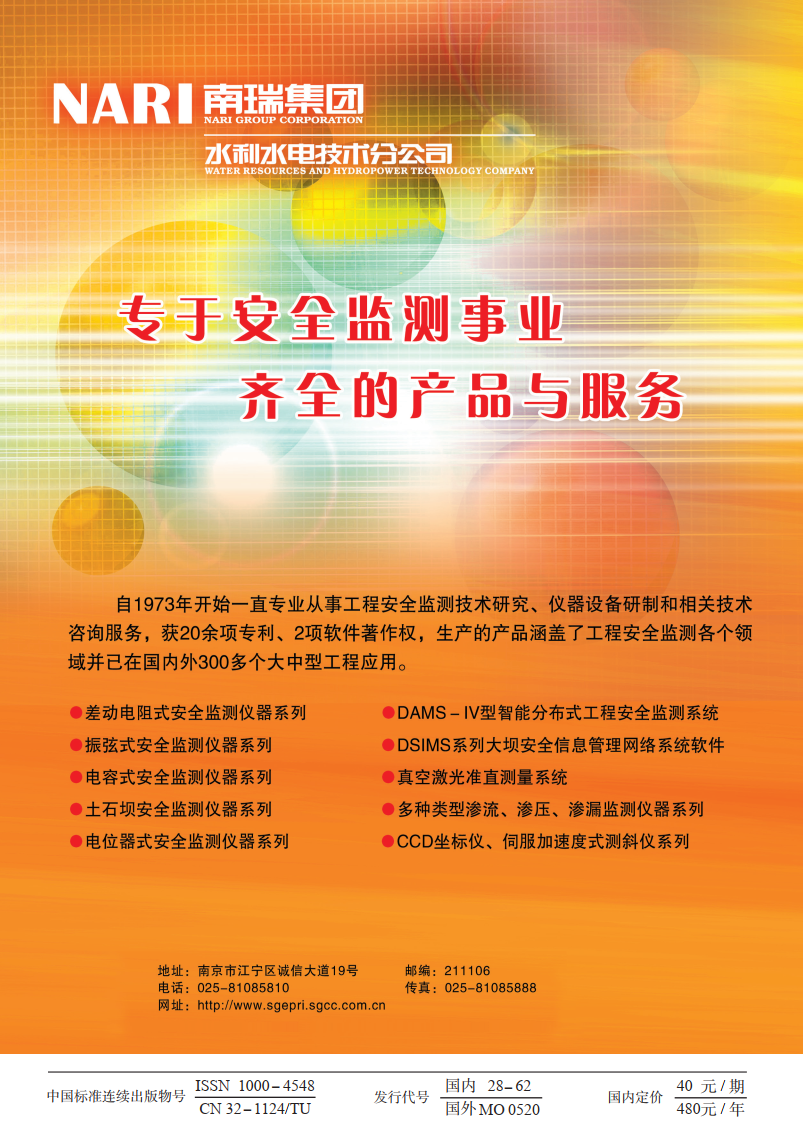| [1] |
RAJU M, KHAITAN S K. Modeling and simulation of compressed air storage in caverns: a case study of the Huntorf plant[J]. Applied Energy, 2012, 89: 474-481.
|
| [2] |
KUSHNIR R, ULLMANN A, DAYAN A. Thermodynamic and hydrodynamic response of compressed air energy storage reservoirs: a review[J]. Rev Chem Eng, 2012, 28: 123-148.
|
| [3] |
李仲奎, 马芳平, 刘 辉. 压气蓄能电站的地下工程问题及应用前景[J]. 岩石力学与工程学报, 2003, 22(增刊1): 2121-2126. (LI Zhong-kui, MA Fang-ping, LIU Hui. Underground engineering problems in compressed air energy storage and its developing future[J]. Chinese Journal of Rock Mechanics and Engineering, 2003, 22(S1): 2121-2126. (in Chinese))
|
| [4] |
CROTOGINO F, MOHMEYER K U, SCHARF R. Huntorf CAES: more than 20 years of successful operation[C]// Spring 2001 meeting. Orlando, 2001.
|
| [5] |
HAYASHI M. Rock mechanics of compressed air energy storage and super magnetic energy storage in Japan [C]// Rock Mechanics in Japan. Tokyo: Japanese Committee for ISRM, 1991.
|
| [6] |
SUCCAR S, WILLIAMS R H. Compressed air energy storage: theory, resources, and applications for wind power[R]. Princeton: Princeton Environmental Institute, Princeton University, 2008.
|
| [7] |
ALLEN R D, DOHERTY T J, FOSSUM A F. Geotechnical issues and guidelines for storage of compressed air in excavated hard rock caverns[R]. Springfield: Pacific Northwest Laboratory, 1982.
|
| [8] |
LINDBLOM U E. Design criteria for the Brooklyn Union gas storage cavern at JFK Airport[J]. Int J Rock Mech & Min Sci, 1997, 34(3/4): 179.
|
| [9] |
ISHIHATA T. Underground compressed air storage facility for CAES-G/T power plant utilizing an airtight lining[J]. Int Soc Rock Mech, 1997, 5(1): 17-21.
|
| [10] |
KIM H M, RUTQVIST J, RYU D W, et al. Exploring the concept of compressed air energy storage (CAES) in lined rock caverns at shallow depth: a modeling study of air tightness and energy balance[J]. Appl Energy, 2012, 92: 653-667.
|
| [11] |
KIM H M, RUTQVIST J, CHOI B H. Feasibility analysis of underground compressed air energy storage in lined rock caverns using the TOUGH-FLAC simulator[C]// TOUGH Symposium 2012. Berkeley: Lawrence Berkeley National Laboratory, 2012.
|
| [12] |
SONG W K, RYU D W. Stability analysis of concrete plugs in a pilot cavern for compressed air energy storage[C]// Harmonising Rock Engineering and the Environment. London: Taylor & Francis Group, 2012.
|
| [13] |
KIM H M, RUTQVIST J, JEONG J H, et al. Characterizing excavation damaged zone and stability of pressurized lined rock caverns for underground compressed air energy storage[J]. Rock Mech Rock Eng, 2012, 4: 312-323.
|
| [14] |
JOHANSSON J. High pressure storage of gas in lined rock caverns: cavern wall design principles[D]. Stockholm: Royal Institute of Technology, 2003.
|
| [15] |
RUTQVIST J, KIM H M, RYU D W, et al. Modeling of coupled thermodynamic and geomechanical performance of underground compressed air energy storage in lined rock caverns[J]. Int J Rock Mech & Min Sci 52: 71-81.
|
| [16] |
KUSHNIR R, DAYAN A, ULLMANN A. Temperature and pressure variations within compressed air energy storage caverns[J]. Int J Heat & Mass Transf, 2012, 55(21/22): 5616-5630.
|
| [17] |
陈剑文, 蒋卫东, 杨春和, 等. 储气库注、采气过程热工分析研究[J]. 岩石力学与工程学报, 2007, 26(增刊1): 2887-2894. (CHEN Jian-wen, JIANG Wei-dong, YANG Chun-he, et al. Study on engineering thermal analysis of gas storage in slat formation during gas injection and production[J]. Chinese Journal of Rock Mechanics and Engineering, 2007, 26(S1): 288-2894. (in Chinese))
|
| [18] |
BARBUTO F A D A. Performance of numerical inversion of Laplace transforms[J]. Adv Eng Software 1991, 13(3): 148-155.
|
| [19] |
刘利强. 拉普拉斯反变换的一种数值算法[J]. 内蒙古工业大学学报, 2002, 21(1): 47-49. (LIU Li-qiang. An algorithm for numerical inversion of Laplace transforms[J]. Journal of Inner Mongolia Polytechnic University, 2002, 21(1): 4-43. (in Chinese))
|
| [20] |
徐芝纶. 弹性力学[M]. 4版. 北京: 高等教育出版社, 2006. (XU Zhi-lun. Elasticity[M]. 4th ed. Beijing: Higher Education Press, 2006. (in Chinese))
|
| [21] |
张家荣, 赵廷元. 工程常用物质的热物理性质手册[M]. 北京: 新时代出版社, 1987. (ZHANG Jia-rong, ZHAO Ting-yuan. A handbook for the thermo-physical properties of engineering materials[M]. Beijing: New Era Press, 1987. (in Chinese))
|
| [22] |
王志魁. 化工原理[M]. 3版. 北京: 化学工业出版社, 2005. (WANG Zhi-kui. Principles of chemical engineering[M]. 3rd ed. Beijing: Chemical Industry Press, 2005. (in Chinese))
|
| [23] |
KUSHNIR R, ULLMANN A, DAYAN A. Thermodynamic models for the temperature and pressure variations within adiabatic caverns of compressed air energy storage plants[J/OL]. [2013-05-14]. doi: 10.1155/2013/603130.
|








 下载:
下载:
